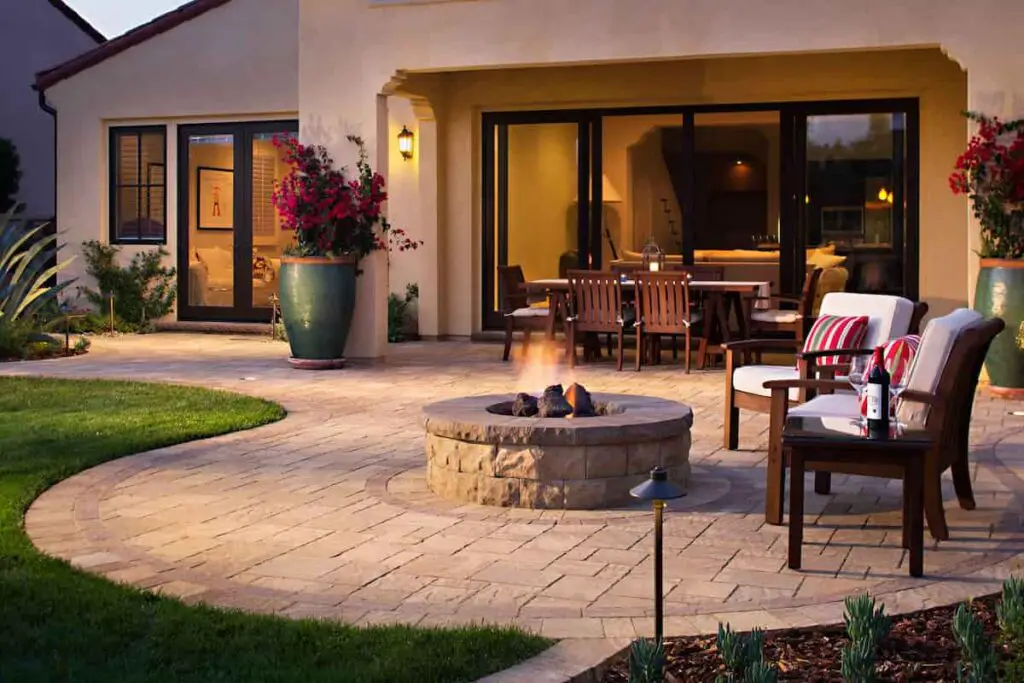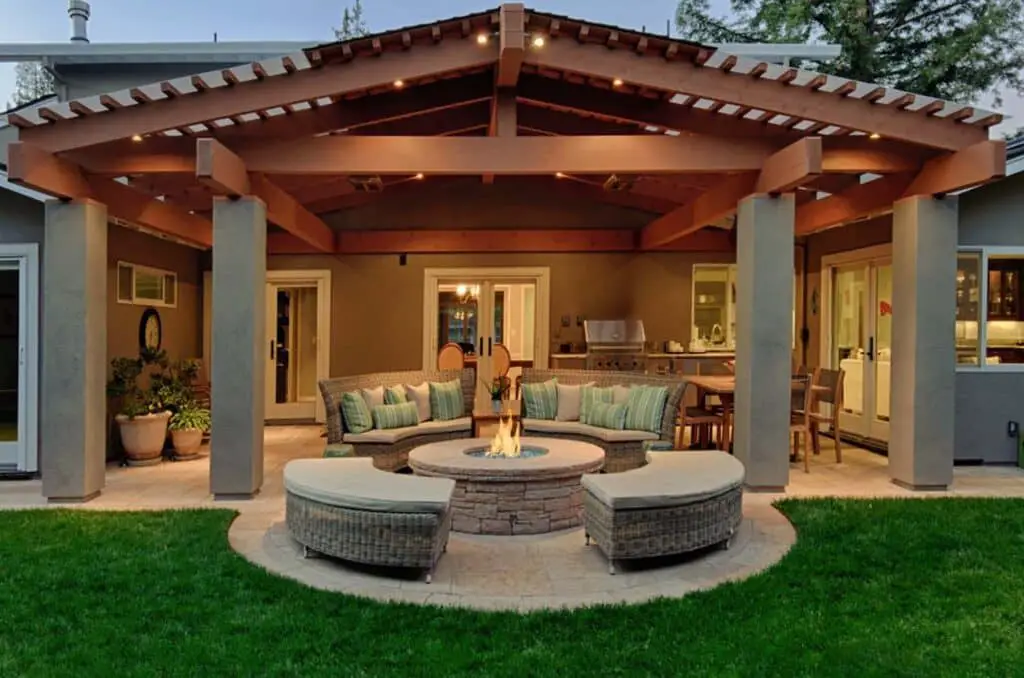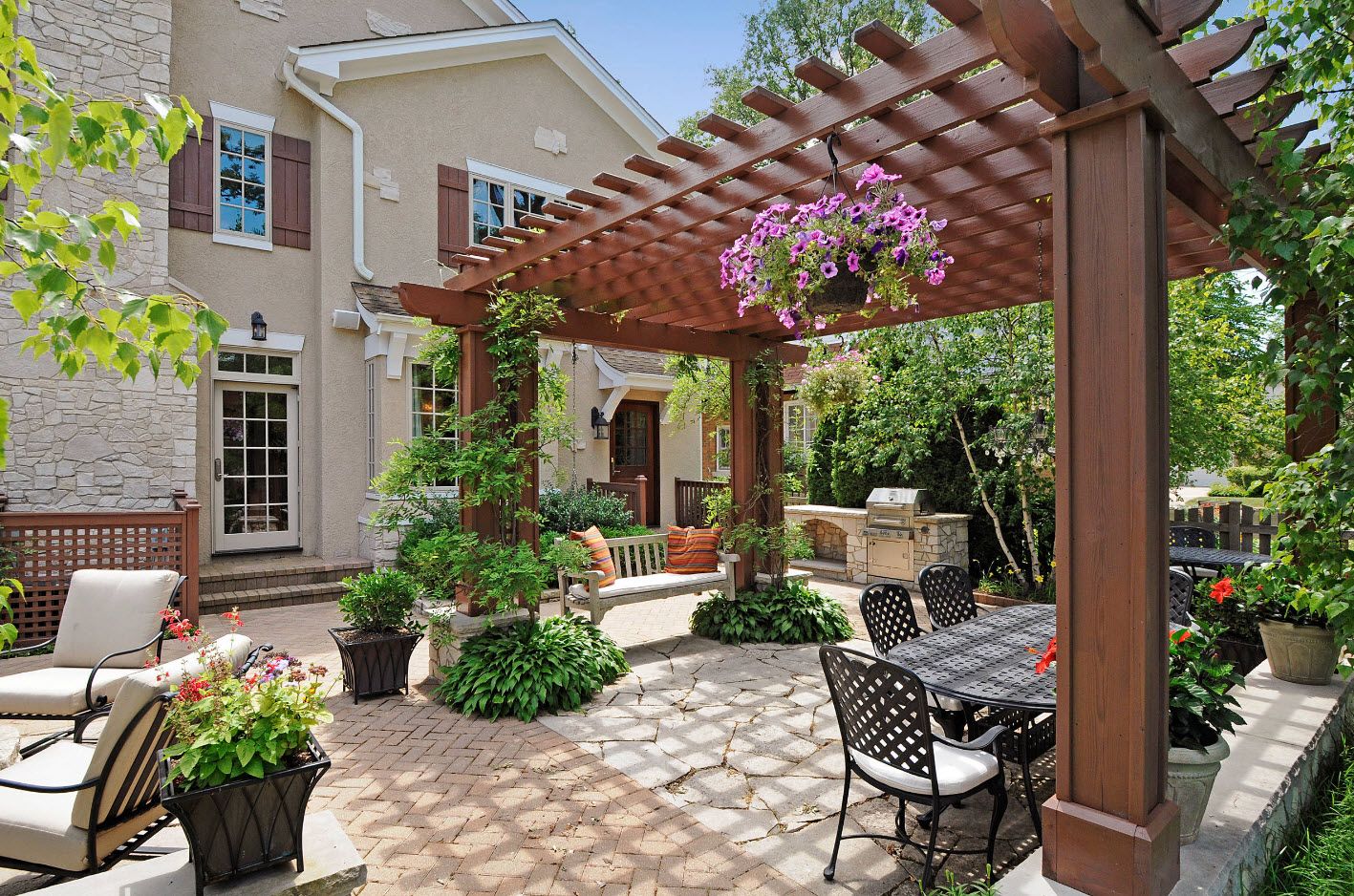What Is A Good Size Patio
Introduction
What Is A Good Size Patio: A patio is an outdoor space that is typically paved and used for dining, entertaining, or simply relaxing. It can be an extension of your living space and a great addition to any home. However, when it comes to designing a patio, one of the most important considerations is its size. So, what is a good size patio?
The size of a patio can vary depending on several factors, including the available space, the intended use, and personal preferences. A good size patio should be large enough to accommodate your needs and activities, but not so big that it overwhelms the rest of your outdoor area. It should strike a balance between functionality and aesthetics.
When determining the size of your patio furniture, consider how you plan to use it. If you enjoy hosting outdoor parties and gatherings, you will need a larger patio to accommodate seating, dining tables, and possibly even a grill or outdoor kitchen. On the other hand, if you primarily want a cozy space for lounging and relaxation, a smaller patio may be sufficient.
Another factor to consider is the available space in your yard. Measure the area where you plan to build your patio and take into account any existing structures or landscaping features that you want to incorporate. It’s important to leave enough room for pathways, greenery, and other elements that can enhance the overall design of your outdoor space.

Is a 10×10 patio big enough?
When it comes to determining the size of a patio, there are several factors to consider. One of the most important considerations is the intended use of the patio. A 10×10 patio may be sufficient for some purposes, but it may not be large enough for others. It ultimately depends on how you plan to use the space and what your specific needs and preferences are.
For some people, a 10×10 patio may be perfectly adequate. If you simply want a small outdoor space to relax and enjoy the fresh air, a 10×10 patio can provide enough room for a couple of chairs or a small table and chairs set. It can be a cozy spot to read a book, have a cup of coffee, or chat with a friend. In this case, a 10×10 patio can be a great addition to your outdoor living space.
However, if you have larger gatherings or plan to use your patio for entertaining, a 10×10 space may feel cramped. It may not provide enough room for a larger dining table or additional seating. If you frequently host parties or have a large family, you may want to consider a larger patio size to accommodate your needs. A larger patio can provide more space for furniture, a grill, and other outdoor amenities.
Additionally, the size of your outdoor space and the layout of your backyard can also impact the size of your patio. If you have a small backyard, a 10×10 patio may be the largest size that can comfortably fit within your available space. On the other hand, if you have a larger yard, you may have more flexibility in choosing a larger patio size.
What is the average size of a patio?
The typical patio size depends on area, use, and personal preferences. Patios are used for dining, entertaining, and relaxing. They can be linked to a house or freestanding and range from tiny and comfortable to huge and luxurious.
Patio sizes vary. Typically, a patio should be at least 10 feet by 10 feet to accommodate a dining table and chairs. It’s large enough for comfortable seating and movement. For entertainment or hosting, patios can be 12 feet by 12 feet, 20 feet by 20, or greater.
Space is crucial when choosing a patio size. If your backyard or outside space is small, a smaller patio may work better. However, if you have a large yard or space, you may choose a larger patio to expand your outside living space.
Consider the patio’s intended function. It should be spacious enough for a dining table, chairs, and possibly more seating if you want to use it for dining and entertaining. If you plan to relax on the patio, consider comfy seating and outdoor equipment like lounge chairs or hammocks.
What is a medium size patio?
It depends on the homeowner’s wants and tastes, but a medium patio is usually larger than a small patio but less than a large patio.
Several factors determine the size of a medium patio. The first factor is backyard or outside space. A modest patio should be proportional to the outdoor space to allow room for gardens and lawns.
Consider the patio’s intended function. The patio must be spacious enough for a dining table, chairs, and guest seats if the homeowner wishes to use it for dining and entertaining. However, a patio for resting and enjoyment may not need to be as large.
Medium patios are 150–300 square feet. The space offers for a multitude of furniture combinations and design freedom. The form of the outdoor space might also affect the size of a medium patio. A rectangle patio may need more space for furniture, whereas a square patio may need less.
How big should a patio slab be?
Patio slab size is crucial when designing a patio. Space, use, and personal preferences will determine the patio slab size. These variables must be carefully considered to ensure the patio is functional, attractive, and meets homeowner needs.
Patio slab size depends on space. The patio’s location must be measured before choosing a size. This will help establish patio slab maximum dimensions. The patio should have ample area for furniture, plants, and paths. Existing structures and characteristics that affect patio size and layout must also be considered.
The patio’s intended purpose is also important. Patios serve numerous roles for homeowners. Others may want a large, open space for socializing and parties, while others prefer a small, private space for relaxation and quiet evenings. The patio slab size should reflect the activities on it. The homeowner may need a larger patio slab to fit a table and chairs for a dining area.
What is the most common size patio?
The most common size patio varies depending on the specific needs and preferences of homeowners. However, there are a few standard sizes that are commonly used in residential properties. These sizes are popular because they provide enough space for outdoor activities and furniture, while still being manageable in terms of maintenance and cost.
One of the most common sizes for a patio is around 12 feet by 12 feet. This size is often considered a good starting point for homeowners who want a small to medium-sized patio. It provides enough space for a table and chairs, as well as some additional seating or a grill. A 12×12 patio is also relatively easy to maintain and can be built without requiring extensive excavation or construction.
Another popular size for a patio is around 16 feet by 16 feet. This size offers a bit more space than a 12×12 patio and can accommodate larger furniture sets or additional features like a fire pit or outdoor kitchen. A 16×16 patio provides enough room for entertaining guests or hosting small gatherings, while still being manageable in terms of maintenance and cost.
The overall design and layout of the outdoor space, the style and architecture of the house, the climate and weather conditions in the area, and any specific features or amenities that you would like to incorporate into the patio, such as a grill, fire pit, or outdoor kitchen.
How does the intended use of the patio impact its ideal size?
When determining the size of a patio, it is crucial to consider the intended use of the space. The activities and functions that will take place on the patio will greatly impact its ideal size. For example, if the patio is primarily intended for dining and entertaining purposes, it should be large enough to accommodate a dining table and chairs, as well as additional seating areas for guests. On the other hand, if the patio is mainly intended for relaxation and solitude, a smaller size may be sufficient.
The intended use of the patio also affects the flow and layout of the space. If the patio will be used for hosting parties and gatherings, it is important to ensure that there is enough room for people to move around comfortably without feeling cramped. Additionally, if the patio will be used for specific activities such as gardening or outdoor cooking, it may require additional space for equipment and storage.
Are there any specific guidelines or recommendations for determining the size of a patio?
The patio should be large enough for a dining table, chairs, and additional seating if it will be utilized for dining and entertainment. However, a smaller patio may be sufficient for informal groups or relaxing.
Space availability is also crucial. The patio must be measured to fit in the space. Additionally, examine the surrounding landscape layout. The size and style of the patio may be affected by existing objects like trees or shrubs.
What are the advantages and disadvantages of a larger patio versus a smaller one?
When it comes to determining the size of a patio, there are several factors to consider. One of the main considerations is the intended use of the patio. If you plan on using the patio for entertaining large groups of people or hosting outdoor parties, a larger patio would be more advantageous. A larger patio provides ample space for seating, dining, and socializing, allowing you to comfortably accommodate your guests. Additionally, a larger patio gives you more flexibility in terms of furniture placement and design options.
However, there are also disadvantages to having a larger patio. One of the main drawbacks is the cost. A larger patio requires more materials and labor, which can significantly increase the overall cost of the project. Additionally, a larger patio may require more maintenance and upkeep, as there is more surface area to clean and maintain. Another disadvantage is that a larger patio may take up more of your outdoor space, leaving less room for other landscaping features or activities.
Can you provide any tips or suggestions for maximizing the space and functionality of a patio, regardless of its size?
When it comes to maximizing the space and functionality of a patio, there are several tips and suggestions that can be helpful, regardless of its size. Firstly, consider the layout and arrangement of furniture and accessories. Opt for multi-functional pieces that can serve multiple purposes, such as storage benches or tables with built-in planters. This will help to minimize clutter and make the most of the available space.
Additionally, think about the use of vertical space. Install wall-mounted shelves or hanging planters to add storage or greenery without taking up valuable floor space. Utilize the walls for hanging decorations or installing hooks for hanging tools or accessories.
Furthermore, consider the use of lighting to enhance the ambiance and functionality of the patio. Install outdoor lighting fixtures that can provide both task lighting for specific areas and ambient lighting for overall illumination. This will allow you to use the patio during the evening hours and create a cozy atmosphere.

Conclusion
Choosing the right size for your patio is an important decision that can greatly impact your outdoor living experience. After considering various factors such as your available space, intended use, and personal preferences, you can determine the ideal size for your patio. It is crucial to strike a balance between having enough space to accommodate your needs and ensuring that the patio does not overpower your outdoor area.
When determining the size of your patio, it is essential to consider the available space in your yard. Measure the area where you plan to build the patio and take into account any existing structures or landscaping features that may limit the size. It is important to leave enough room for other outdoor activities, such as gardening or playing, if desired. Additionally, consider the overall layout of your yard and how the patio will fit into the existing design.
The intended use of your patio size is another crucial factor to consider when determining its size. If you plan to use the patio primarily for dining and entertaining, you will need enough space to accommodate a dining table and chairs, as well as any additional seating areas. On the other hand, if you envision using the patio for more intimate gatherings or as a quiet retreat, a smaller size may be sufficient.
Lastly, your personal preferences and aesthetic vision should also play a role in determining the size of your patio. Consider the overall style and design of your outdoor area and how the patio will fit into the overall aesthetic. Additionally, think about any future plans or additions you may have for your outdoor space, such as a pool or outdoor kitchen, and how the patio size may need to accommodate these future plans.








